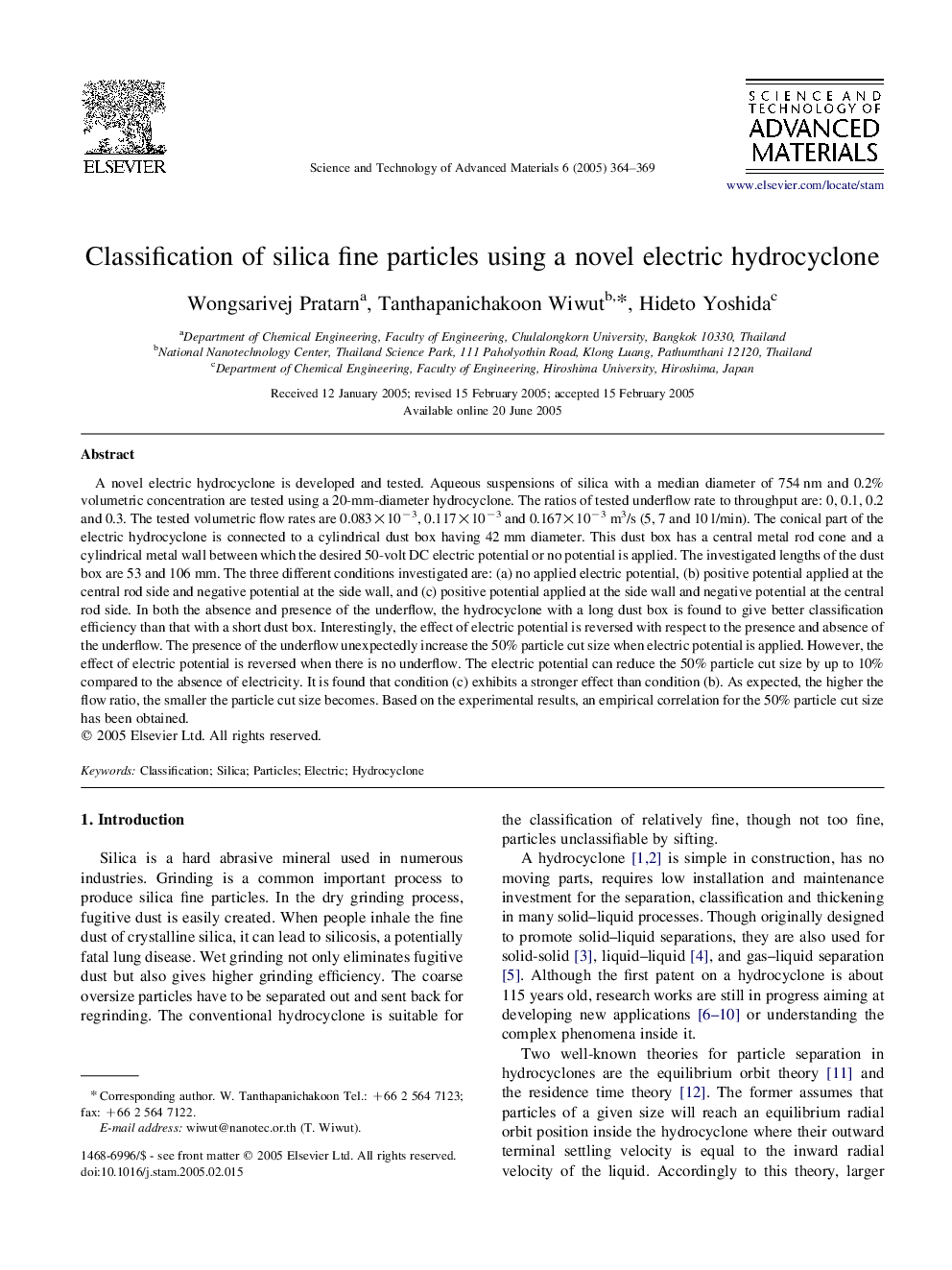| کد مقاله | کد نشریه | سال انتشار | مقاله انگلیسی | نسخه تمام متن |
|---|---|---|---|---|
| 9801413 | 1515482 | 2005 | 6 صفحه PDF | دانلود رایگان |
عنوان انگلیسی مقاله ISI
Classification of silica fine particles using a novel electric hydrocyclone
دانلود مقاله + سفارش ترجمه
دانلود مقاله ISI انگلیسی
رایگان برای ایرانیان
کلمات کلیدی
موضوعات مرتبط
مهندسی و علوم پایه
مهندسی مواد
دانش مواد (عمومی)
پیش نمایش صفحه اول مقاله

چکیده انگلیسی
A novel electric hydrocyclone is developed and tested. Aqueous suspensions of silica with a median diameter of 754Â nm and 0.2% volumetric concentration are tested using a 20-mm-diameter hydrocyclone. The ratios of tested underflow rate to throughput are: 0, 0.1, 0.2 and 0.3. The tested volumetric flow rates are 0.083Ã10â3, 0.117Ã10â3 and 0.167Ã10â3Â m3/s (5, 7 and 10Â l/min). The conical part of the electric hydrocyclone is connected to a cylindrical dust box having 42Â mm diameter. This dust box has a central metal rod cone and a cylindrical metal wall between which the desired 50-volt DC electric potential or no potential is applied. The investigated lengths of the dust box are 53 and 106Â mm. The three different conditions investigated are: (a) no applied electric potential, (b) positive potential applied at the central rod side and negative potential at the side wall, and (c) positive potential applied at the side wall and negative potential at the central rod side. In both the absence and presence of the underflow, the hydrocyclone with a long dust box is found to give better classification efficiency than that with a short dust box. Interestingly, the effect of electric potential is reversed with respect to the presence and absence of the underflow. The presence of the underflow unexpectedly increase the 50% particle cut size when electric potential is applied. However, the effect of electric potential is reversed when there is no underflow. The electric potential can reduce the 50% particle cut size by up to 10% compared to the absence of electricity. It is found that condition (c) exhibits a stronger effect than condition (b). As expected, the higher the flow ratio, the smaller the particle cut size becomes. Based on the experimental results, an empirical correlation for the 50% particle cut size has been obtained.
ناشر
Database: Elsevier - ScienceDirect (ساینس دایرکت)
Journal: Science and Technology of Advanced Materials - Volume 6, Issues 3â4, AprilâMay 2005, Pages 364-369
Journal: Science and Technology of Advanced Materials - Volume 6, Issues 3â4, AprilâMay 2005, Pages 364-369
نویسندگان
Wongsarivej Pratarn, Tanthapanichakoon Wiwut, Hideto Yoshida,